1848–1903
Paul Gauguin
In his early years Gauguin was influenced by Impressionism, but his work can first and foremost be called Symbolist. When he went to live on Tahiti in 1895 it was as part of a movement away from civilization towards a life based on a dream of Paradise and primitivism. A central characteristic of Gauguin’s work is the questing, experimental nature of both his life and work.
Motifs: Portraits, still lifes, landscapes, pictures with motifs from Brittany and Tahitian motifs.
Oil on canvas
75 x 65 cm
1896
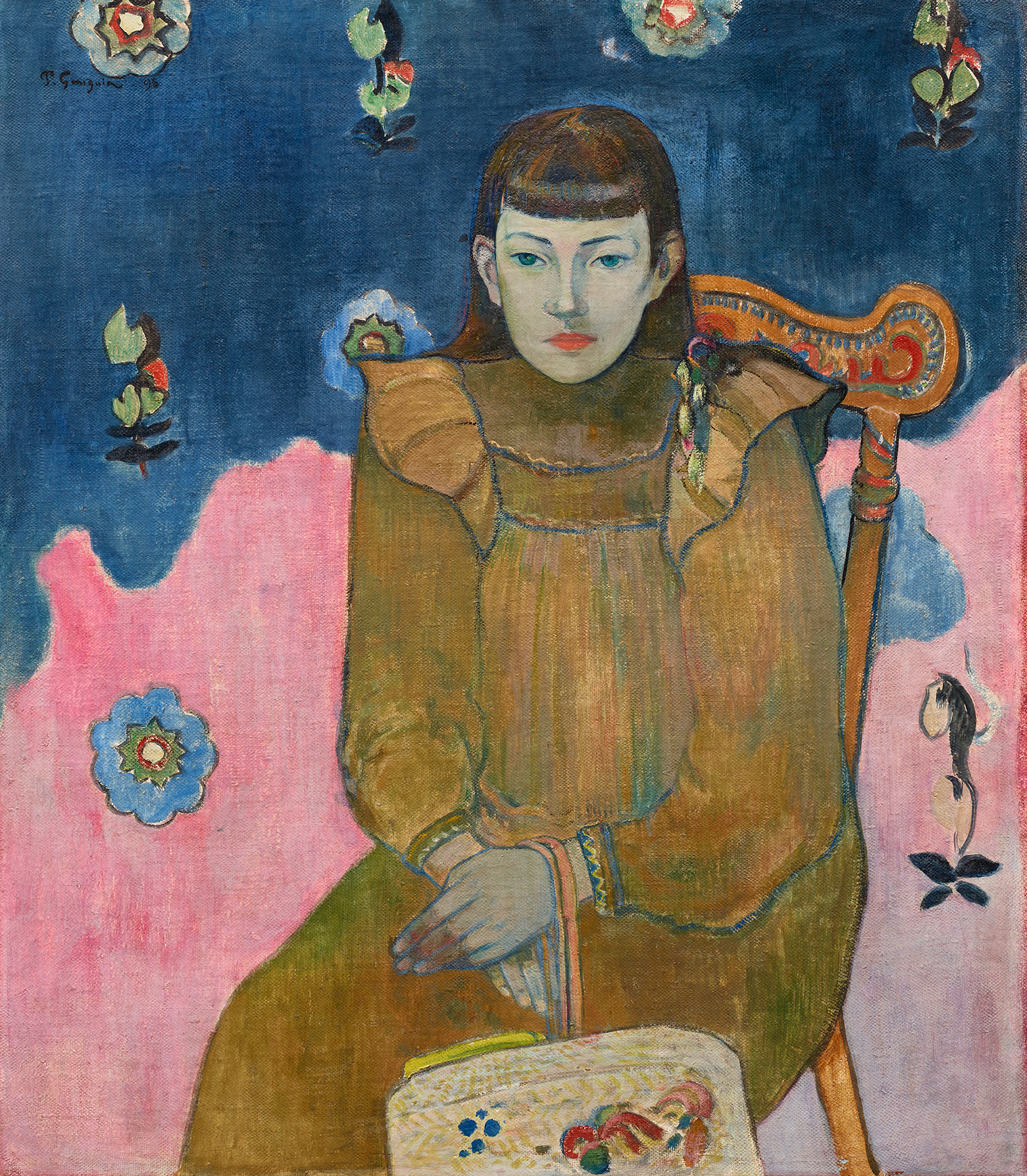
Olie på lærred
75 x 65 cm
1896
Portrait of a Young Woman. Vaïte (Jeanne) Goupil
The picture was painted on Tahiti and shows a French girl, Jeanne Goupil, who was the daughter of the lawyer Auguste Goupil, who had settled down with his family on a plantation near Papeete. Vaïte was her Tahitian name, and her father had ordered a portrait of her from Gauguin.
There is a penetrating Symbolistic atmosphere about the picture: the colours are strong, the wallpaper pattern and the mask-like face almost hypnotize the observer standing before the picture. As a portrait of a young girl the picture is extremely enigmatic. The depiction of the girl Vaïte is quite subordinated to the picture’s overall ornamental character. Gauguin has framed the girl and her dress with a blue contour line which helps to insist on the significance of line and surface rather than volume or a body. The sphere of dreams is characteristic of Gauguin’s pictorial world, and in a way parallels his idea of a dream-world far from European civilization.
Oil on jute sackcloth
73.5 x 92 cm
1888
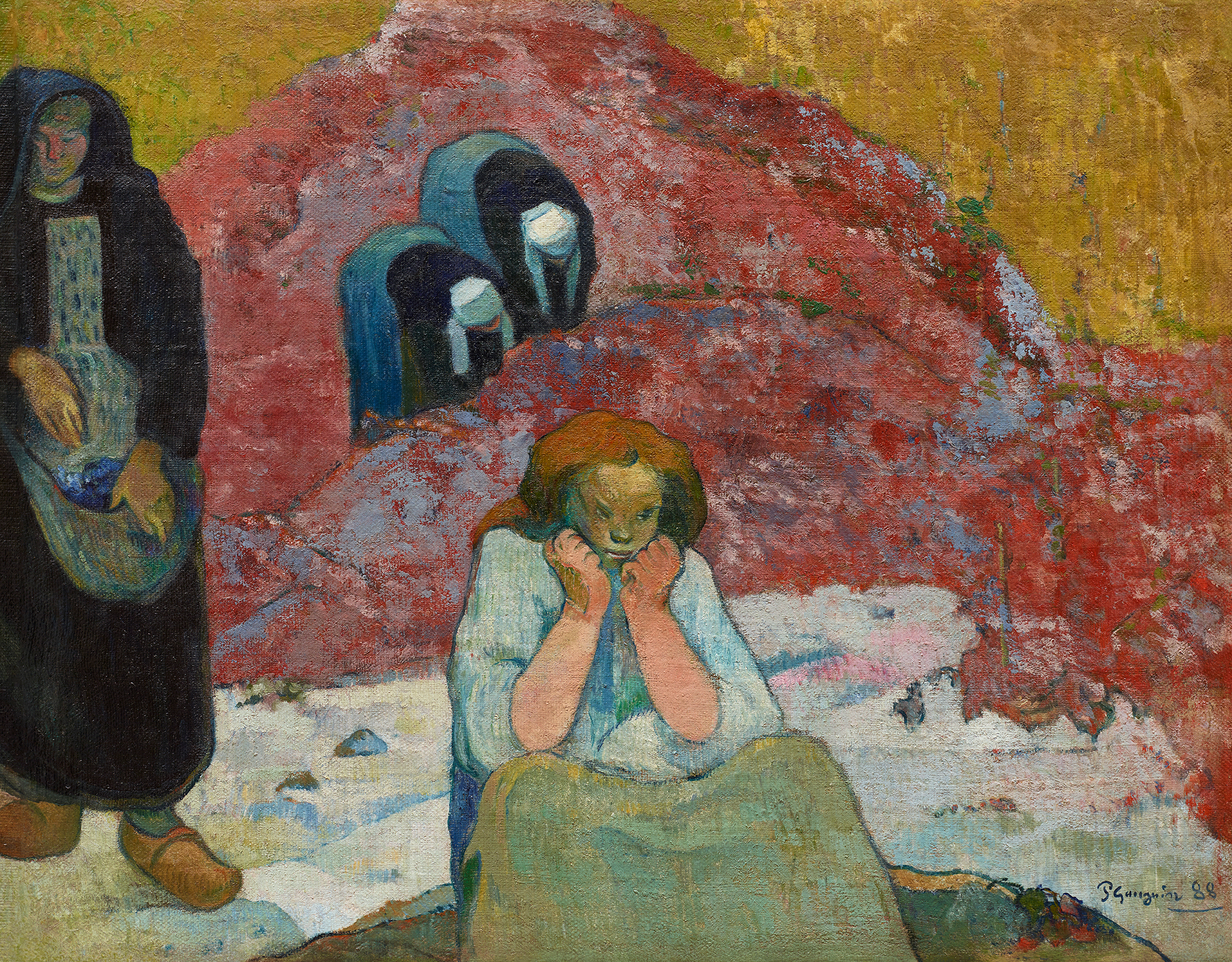
Oil on jute sackcloth
73.5 x 92 cm
1888
The Wine Harvest. Human Misery
At the end of 1888 Gauguin lived and painted with Vincent van Gogh (1853-1890) at Arles in the south of France. They looked for motifs in the surrounding area and Gauguin was especially interested in combining the impressions this made on him with the remembered images within himself. In this picture he painted women in costumes from Brittany – where he had just been staying – but in a vineyard in Arles, while the main figure in the foreground resembles a Peruvian mummy he had seen in Paris.
But the essential thing is not only to trace the sources of Gauguin’s composite motifs. They are a step on his journey of exploration away from a naturalistically painted record of the surrounding world towards a synthetist picture which combines several impressions.
The pictorial idiom is Symbolistic and introverted: it closes off the horizon and moves down into the heaviness – both literal and spiritual – that is the characteristic of the woman in the foreground. As the title suggests, Gauguin’s theme in his picture is fundamental human misery. The melancholy figure and tone of the picture are typical of his work as a whole; as a rule this is not associated with a particular event, but lies as a basic, dominant mood in the pictures.
Oil on jute sackcloth
93 x 73 cm
1888
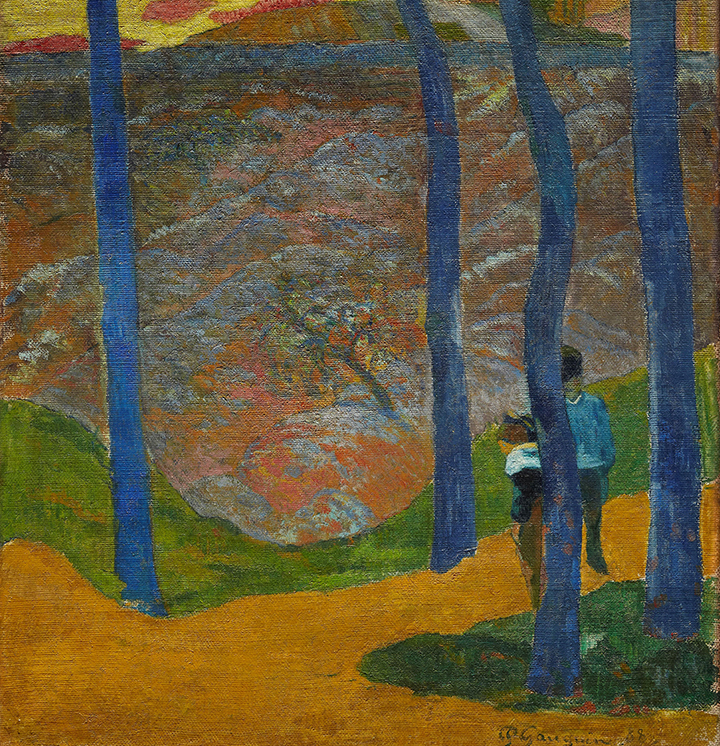
Oil on jute sackcloth
93 x 73 cm
1888
Blue Trees. Your Turn Will Come, My Beauty!
The picture has a very distinctive composition and colouring for its time. Gauguin has divided the canvas into undulating surfaces indicated by a dark, searching contour line. The colours are complementary like orange and purple, and their juxtaposition has an intense effect. The perspective is unorthodox: the fields behind the trees almost cover the horizon and tilt like a flat surface out towards the observer. In particular the tall ornamental blue trees give the picture an alien feel that is typical of Gauguin’s work as a whole.
The strong symbolic charging of the landscape also colours the experience of the two almost hidden figures in the right-hand side of the picture. One senses a drama, but the story is played down and thus all the more suggestive.
Oil on canvas
60 x 74 cm
1881
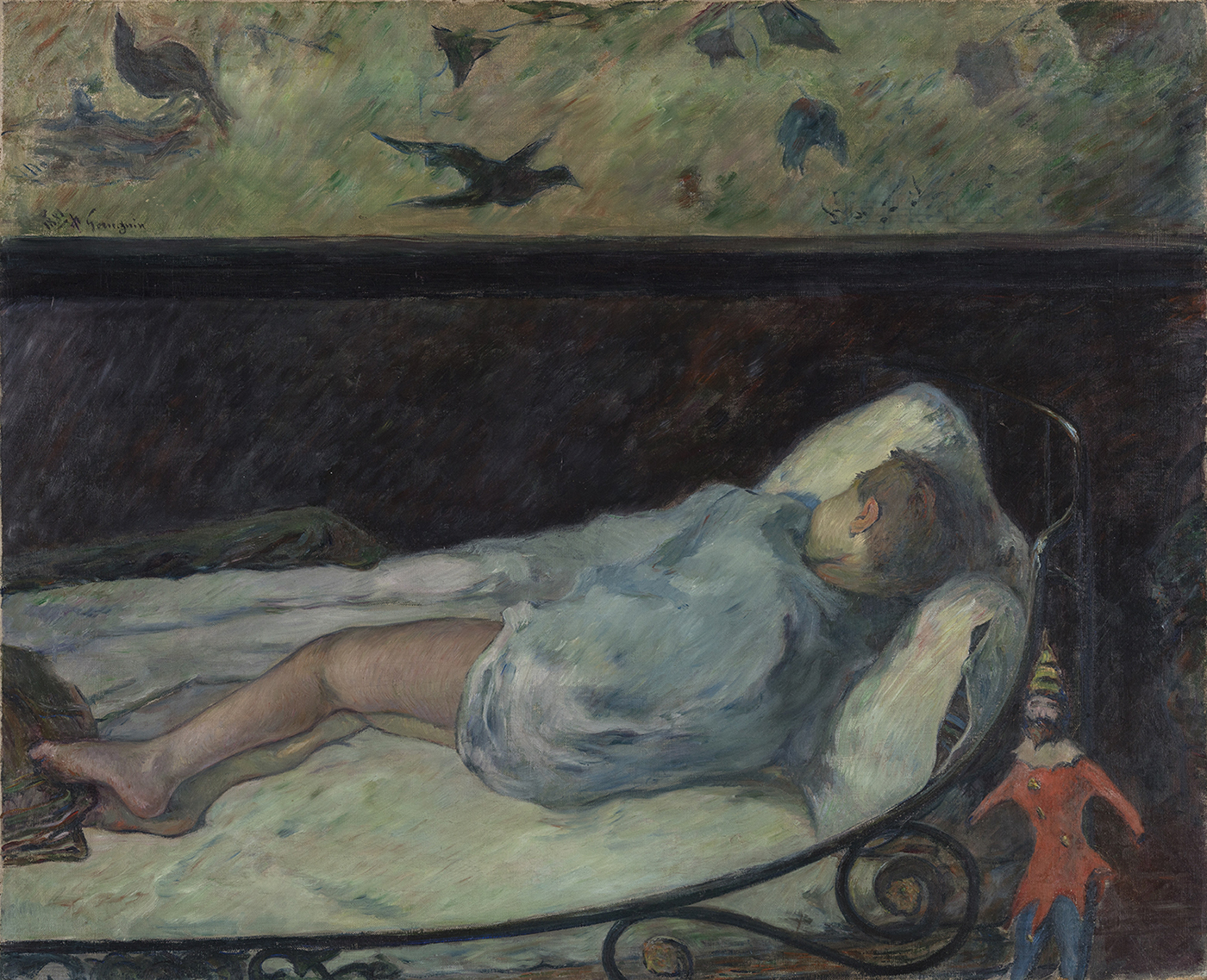
Oil on canvas
60 x 74 cm
1881
The Little One Is Dreaming, Étude
In his early work Gauguin mainly used his close surroundings, with pictures of the family in and around the home, as motifs. The dreaming child seen here is his daughter Aline, who was born in 1877. Yet it is not the trivialities of everyday life that are the main concern; it is the big existential questions about life, dreaming and death that are Gauguin’s themes.
On the wallpaper in the background we see an early example of his interest in giving the decoration in the painting a symbolic meaning. Here it is the bird’s hovering movements to and from the nest that can be associated for example with the child’s dream or the artist’s thoughts. The amputated, stiffened doll in a jester’s costume hanging on the bed in the foreground, with its central placing and its strong expression, is also an essential, meaningful detail in the picture. It gives the painting an eerie, almost ominous aspect which provides a perspective for the child’s dream, and is repeated time and time again in Gauguin’s later work.
Olie på olmerdug
59 x 38 cm
1902
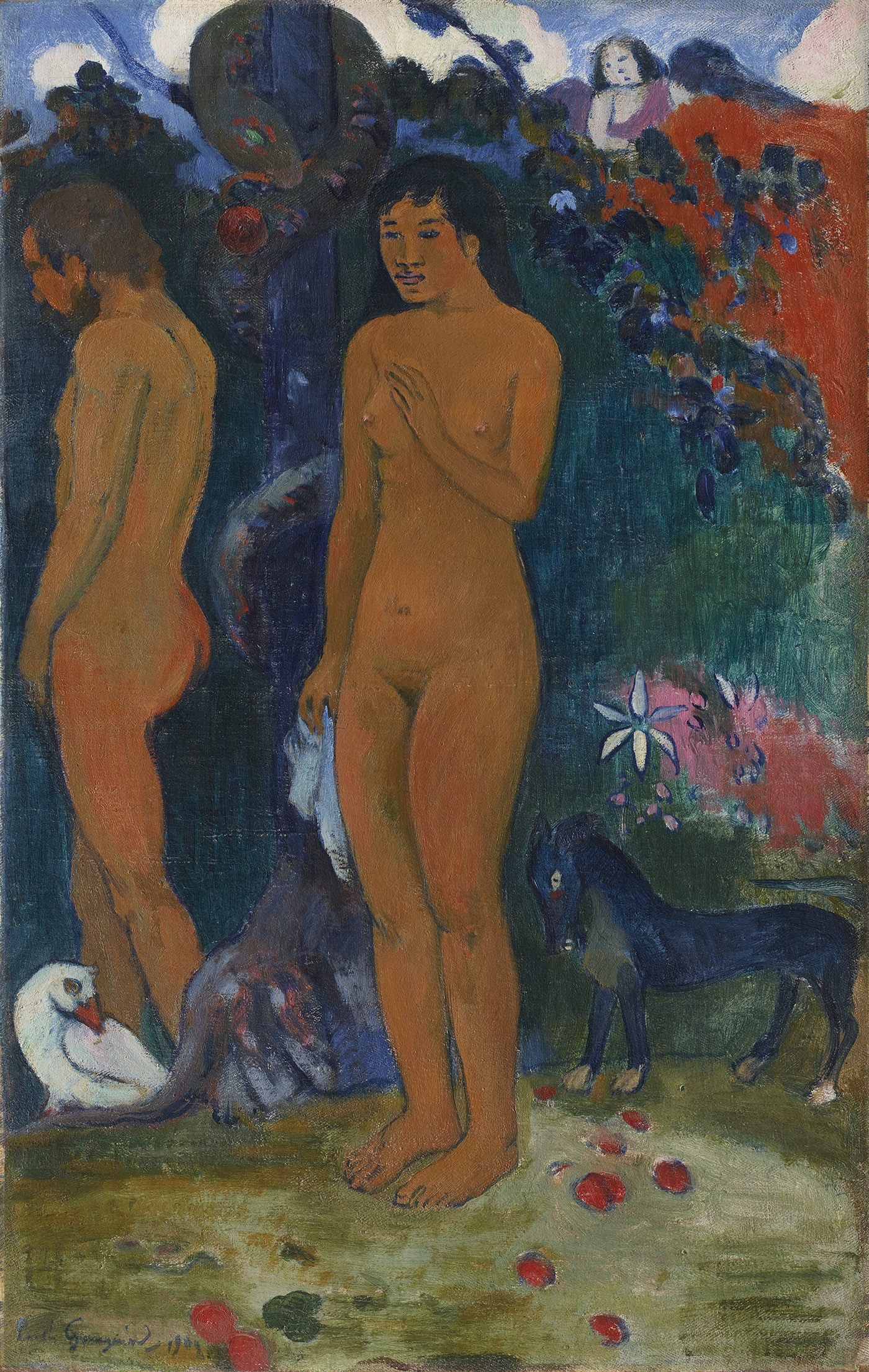
Olie på olmerdug
59 x 38 cm
1902
Adam and Eve
Olie på sækkelærred
72,5 x 93,5 cm
1898
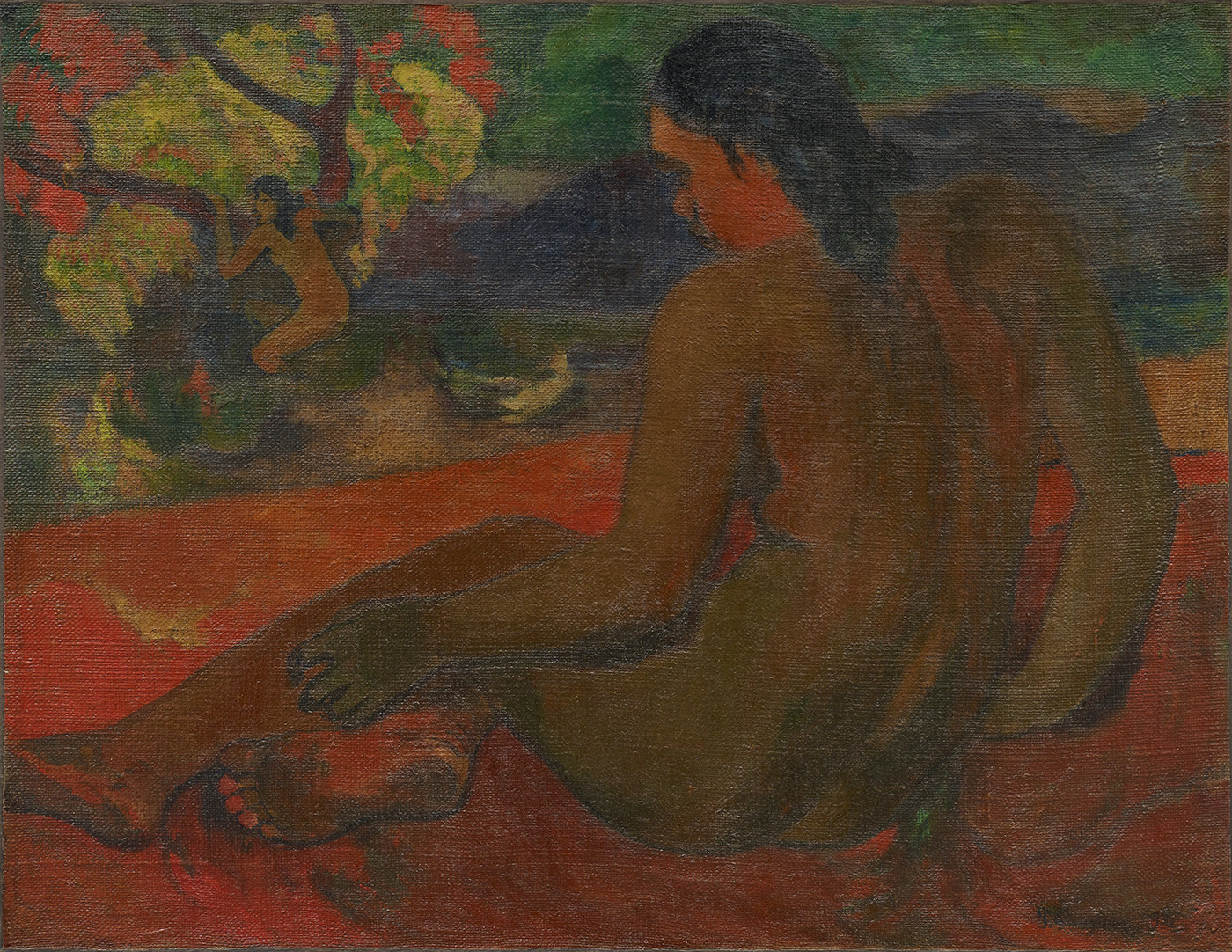
Olie på sækkelærred
72,5 x 93,5 cm
1898
Tahitian Woman
XX
92 x 73 cm
1888
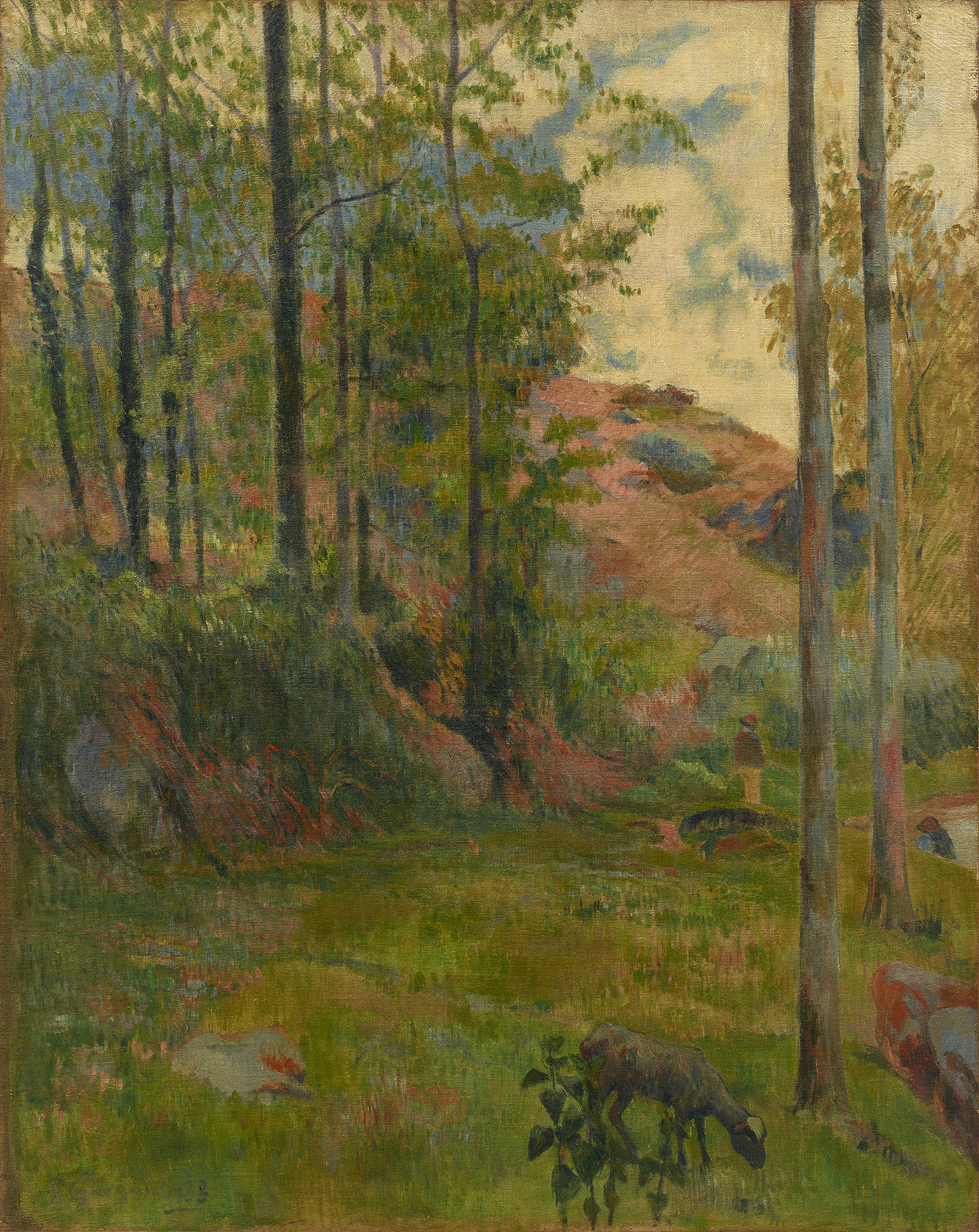
XX
92 x 73 cm
1888
Landscape at Pont-Aven
Oil on jute sackcloth
65 x 43.5 cm
c. 1890-91
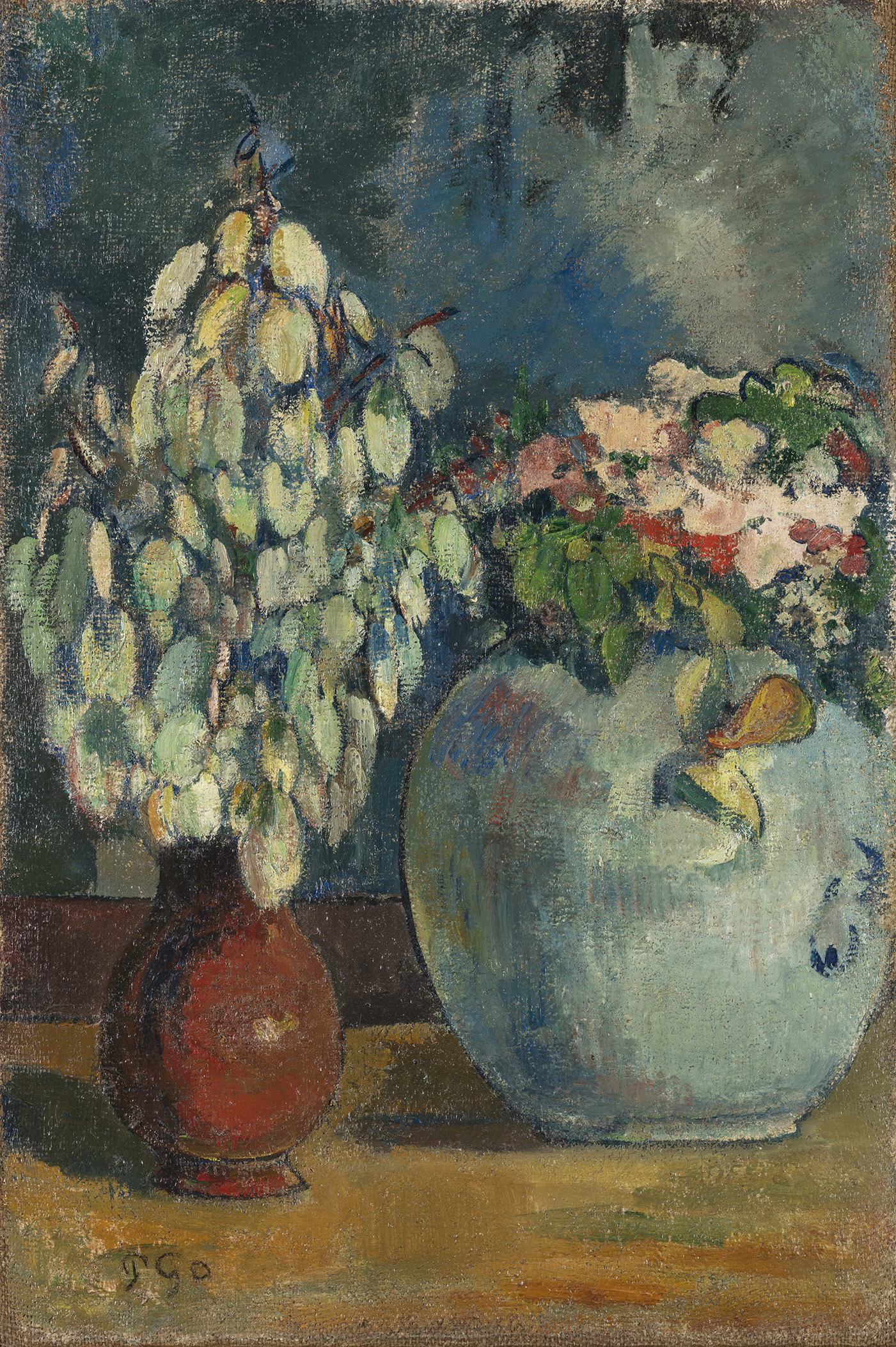
Olie på sækkelærred af jute
65 x 43,5 cm
ca. 1890-91